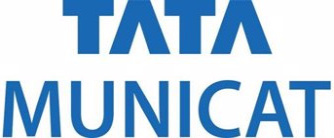Friday’s employment report could be lousy. Or not.
I know, I’ve covered my assessment both ways. But January is always a hokey month when it comes to the employment report issued by the Labor Department. Most times, it comes in worse than expected and sometimes even a lot worse.
But a couple of times over the last 10 years, employment gains were reported to be stellar in the first month of the new year.
The ADP report out Wednesday showed excellent job growth. That might be an omen for Friday, but it guarantees nothing because ADP and Labor measure different things.
If I were making odds on Friday’s report, I’d say there’s a 60 percent chance that job growth will be disappointing, 20 percent that it will be wonderful, and 20 percent that it will be in line with the mediocre 170,000 or so jobs expected by the “experts.”
You have to understand one critical thing at the outset.
There is never job growth in January. How could there be with companies, especially retailers, scaling back after the holiday season?
The number put out by the government almost always shows an expansion in the job market after seasonal adjustments. Unless somebody proclaims that Christmas will extend into January, the raw, unaltered data will always show millions of lost jobs in the first month after the holiday season.
You can look this up for yourself on the Bureau of Labor Statistics Web site, but almost nobody ever does. Take January 2016 as a for instance: Growth after the adjustments made by the government was reported to be 151,000 jobs. That was one of the disappointing Januarys compared with what the experts were expecting.
But the raw data, which are never in the press release, would have scared people to death. In reality, there were 144,116,000 jobs in December 2015 and only 141,150,00 a month later. So there was actually a loss of 2,966,000 in January 2016.
I have no beef with seasonal adjustments. Jobs are expected to be created in December and lost in January. The adjustments smooth out monthly job-total charts so they don’t end up looking like a jagged mountain range.
But there are also bad adjustments that I definitely disagree with. These other adjustments are where the Labor Department can play fast and loose with its stats.
I’m talking about the adjustments the department takes when it guesses at how many undetectable jobs have been created across the country. Regarding the many small businesses in the US, it is hard to draw a bead on every job created or lost — so Labor takes an educated guess.
This is a guesstimate that’s made in additional to the seasonal adjustment, and it tends to make the job market look better than it actually is during the spring — and worse than it actually is in winter months like January.
This dicey guesstimate is heavily biased toward jobs quietly being created even when the nation’s economy is plodding along at a slow pace — as it has been for the past 10 years. The one exception is January, when the guesstimate model suddenly and abruptly enacts revenge for all the other good months and subtracts a load of jobs.
Last January, this guesstimate subtracted 233,000 jobs from the country’s pre-seasonally adjusted workforce. The year before, it wiped out 275,000 jobs. In fact, from 2014 back to 2011, the January guesstimate cut 307,000, 314,000, 367,000 and 339,000 jobs. You get the idea.
Labor has told me that it doesn’t know how much these guesstimates affect the seasonally adjusted numbers that are released to the public — but my guess is that it’s close to 40,000 jobs.
So, with that big a chunk of jobs being wiped out by a guesstimate, it’s almost impossible for January’s job growth to look good — except that it occasionally does.
In January 2012, the government, after giving the jobs numbers a seasonally adjusting rubdown, reported a gain of 243,000. The raw data? Roughly 2.6 million jobs were lost.
That happened when Uncle Sam’s expected more job losses in the raw data than actually occurred. So the seasonal adjustments went haywire with optimism.
I’ve probably lost you by now, but this is another thing you will need to know in the months ahead: The Labor Department’s guesstimates will ultimately make the economy look stronger, even if it really isn’t, during the months of April, May and to a lesser extent in June.
This is a fake-out or maybe it’s even fake news that government policy-makers cook up and Wall Street gobbles up.
The US economy, as you probably heard last Friday, grew at the slowest rate last year since 2011. And we already know that the quality of new jobs created since the last recession has been lacking, with a heavy emphasis on part-time and contract work over traditional employment.
If Friday’s number is worse than expected, Wall Street might cheer because it’ll think the Federal Reserve’s policy of raising interest rates will have to be put on hold.
A strong number might do the opposite and cause the stock market pain.
I do know one thing. If you put all these facts and numbers together and take them to your next cocktail party, you won’t be invited back anytime soon.
Our editors found this article on this site using Google and regenerated it for our readers.













